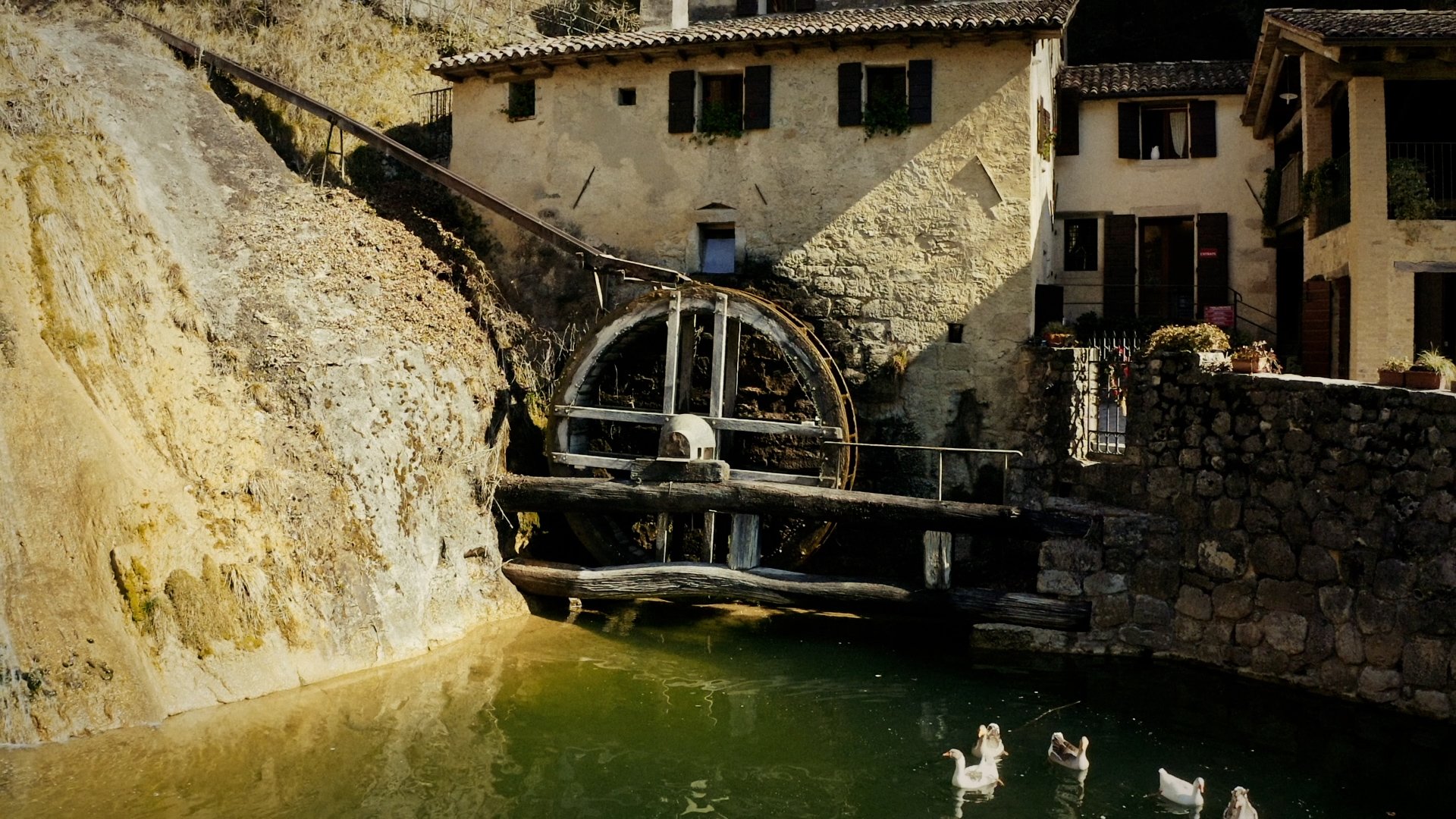Stone-ground flours: a tradition to preserve
Stone-ground flours: a tradition to preserve
The finest flours, a special place where time seems to have stopped: from the millstone to the perfect polenta, together with Ruth and Andrea.
A hearth around which to warm up, eat and gather. A cauldron hanging over the fire. The polenta is inverted onto a large wooden cutting board, with meat in sauce or cheese in the centre, which becomes soft and stringy.
An image of tradition linked to periods of poverty, but also to moments of conviviality and human warmth.
Like pizza and pasta, polenta, made from corn flour, should also be counted among the most representative products of Italy: a much loved and respected food, which has been a saving grace during periods of famine or war.
A simple preparation, very few ingredients (corn flour, water and salt) and great versatility, for a tasty recipe that finds its perfect place in daily menus, as an accompaniment or single dish.
Just as Andrea suggests in his cooking courses, polenta can be used in fish or meat starters, in first courses, as a side dish to pair with second courses, even as a filling for ravioli. Even in desserts, corn flour is a delicious ingredient: bussolà, zaeti, fregolotta and pinza are typical local desserts, all based on “polenta flour”.
Stone-ground flours: a tradition to preserve

The history of the Molinetto della Croda di Refrontolo, in the province of Treviso, is linked to this tradition: built in 1630, it was used until 1953 to grind the corn used for polenta. After a period of disuse, the Municipality decided to renovate it in the mid-1990s and make it available to the community again.
When the only driving force was water, many mills were built along the rivers (about forty in the area), which the population used as millstones: the Molinetto, in fact, was built near a waterfall, on the “croda” of the mountain .
It has always been a meeting place between those who brought the corn and those who ground it, an opportunity for a chat, an exchange of opinions and, why not, a glass of wine drunk in company.
Even today, thanks to the volunteers of the Molinetto della Croda Association, the mill and the sale are moments of exchange, not only material: there is never a shortage of anecdotes, advice and stories, which transform the commercial transaction into a unique and enriching experience .
For Ruth and Andrea this mill represents a magical and evocative place, where they love to return often even in the company of their guests: the force of the water, the community spirit, the timeless atmosphere make it truly special.
Quality, love and taste

Introduced after the discovery of America, but already cultivated for thousands of years in Central America, corn has long been the basis of the food subsistence of many Italian families, especially in rural areas.
Molinetto della Croda has chosen to produce the two types of corn that are commonly considered the most valuable for polenta, but also the most difficult to grow: biancoperla and marano.
Tapered cobs, white and with bright grains, a very tall and not very robust plant, from which it is necessary to remove the cob before it reaches complete maturation and becomes too heavy: Biancoperla corn is the variety from which white polenta, called “of Treviso”.
Small cobs and limited productivity (around 40 quintals per hectare) for Marano corn, which takes its name from Marano Vicentino, the town where it was cultivated for the first time in 1890, thanks to the intuition of a farmer: with his flour, the unmistakable yellow, soft and tasty polenta is produced. The low yields and production difficulties have proven to be weak deterrents with respect to the love for the product, for tradition and for quality, exactly as technology has never could compete with the uniqueness of the stone mill.
In stone mills the mill is not able to perfectly separate the components of the grain, the bran, the chaff, to obtain a pure and perfectly refined flour, but the product obtained is richer in fibre, nutritious, fragrant and tasty .
Special ingredients, precious memories
Among the experiences that Ruth and Andrea make their guests live every day, the moment of grinding is certainly one of the most pleasant, even on a sensorial level: caressing the flour, testing its consistency and smelling its aromas, listening to the sound of the water, admiring the force of nature.
Each bag lovingly filled with white or yellow flour will soon be transformed into a plate of polenta, warm and tasty, which will accompany one of the many convivial moments that make Ruth and Andrea’s shared nest a magical place, like the Molinetto della Croda.

Use our Product Configurator to complete the look of a range that’s Uniquely Yours
Bring your culinary
dreams to life

